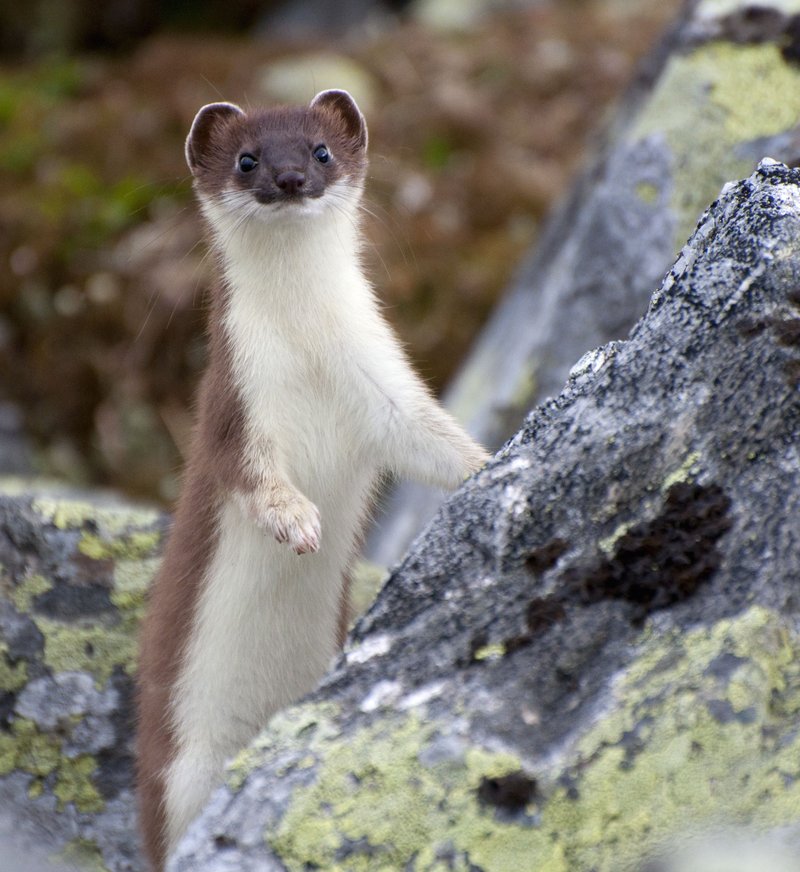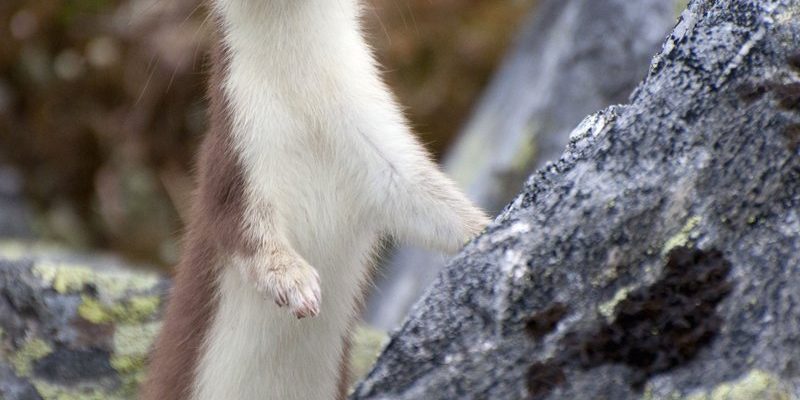
Imagine you’re on a nature walk, spotting a stoat darting across a meadow, changing colors with the seasons. It’s incredible to think that every twist and turn in their history has shaped this creature into the agile predator we see today. Let me explain how the stoat has evolved through time, showcasing not only its physical adaptations but also its role in the ecosystems it inhabits.
What Exactly is a Stoat?
Before we dive into their history, let’s clarify what a stoat truly is. The stoat, scientifically known as *Mustela erminea*, is a small mammal belonging to the family Mustelidae, which includes weasels, otters, and ferrets. Stoats are characterized by their long, slender bodies, short legs, and bushy tails. They usually have a brown or reddish-brown coat in the summer, while their fur turns white in winter to blend in with the snow—a clever trick for staying hidden from predators and prey alike.
You might be wondering why they have two different coats. This fascinating adaptation helps them survive in a variety of habitats, from forests and fields to snowy landscapes. Think of it like dressing for the occasion—having the perfect gear for both warm and cold weather allows stoats to flourish in diverse environments.
Origins of the Stoat
The evolutionary journey of the stoat started millions of years ago. Stoats descended from early carnivorous mammals that prowled the Earth during the late Eocene epoch, around 40 million years ago. These ancestors were small, agile creatures that eventually adapted to hunting smaller animals for food. As the climate changed and continents shifted, these early mammals evolved into the mustelids we are familiar with today.
Interestingly, the earliest known mustelid is believed to have lived in North America and then spread across the globe. Over time, as populations migrated, they adapted to their specific environments. This movement helped create distinct subspecies of stoats, each with varying physical traits depending on their habitat. For instance, stoats in warmer regions often have shorter fur and slightly different coloration compared to their counterparts in colder climates.
The Adaptations of the Stoat
Stoats have developed several unique adaptations that make them excellent hunters. One of their most striking features is their flexible body. This allows them to squeeze into tight spaces—perfect for chasing after their favorite prey, such as voles or rabbits. Their sharp claws help them grip onto surfaces, making them agile climbers.
Another fascinating adaptation is their keen sense of hearing and vision. Stoats can detect the slightest rustle of grass or movement, which is crucial for catching their next meal. Imagine being able to hear a tiny mouse scurrying through the grass from several feet away! This heightened sense of awareness makes them formidable hunters and gives them an edge in the wild.
Furthermore, stoats are known for their playful behavior. They often engage in playful antics and social interactions, which might serve important roles in their development and hunting strategies. Such behaviors allow them to build skills that help in survival.
The Role of Stoats in Ecosystems
Stoats play a vital role in their ecosystems as predators. By keeping populations of small mammals in check, they help maintain the delicate balance of their environment. If stoats were to disappear, the population of their prey could surge, leading to overgrazing and other ecological problems.
Additionally, stoats themselves are prey for larger animals, such as birds of prey and foxes. This predator-prey dynamic is essential for sustaining healthy populations across species. It’s a classic example of how every creature, no matter how small, has a part to play in the bigger picture.
On the flip side, stoats can sometimes become pests. In some regions, like New Zealand, they were introduced for pest control but ended up threatening native wildlife. This complex relationship with the ecosystem reminds us that introducing species must be handled with care, as it can lead to significant consequences.
Conservation Status and Challenges
While stoats are fairly widespread, they face various challenges that threaten their habitats and populations. Habitat destruction, primarily due to human activities like agriculture and urban development, reduces their living spaces. Additionally, climate change poses a risk by altering the environments that stoats rely on for survival.
Conservation efforts are crucial for protecting stoats and their habitats. This means not only preserving their natural environments but also monitoring their populations. In areas where they have become invasive, such as New Zealand, targeted control measures are put in place to balance the ecosystem without wiping out stoats entirely.
It might seem like a precarious balancing act, but every effort counts. People working to protect stoats are also investing in the health of entire ecosystems, ensuring that these beautiful creatures continue to thrive for generations to come.
The Future of Stoats
Looking ahead, the future of stoats will likely depend on continued conservation efforts and our relationship with the environment. As climate change continues to reshape habitats, stoats will need to adapt more than ever. Their remarkable evolutionary history shows us that they are resilient creatures, but resilience doesn’t mean invincibility.
Understanding and appreciating the evolutionary history of the stoat is essential for fostering a connection with nature. If we recognize the incredible journey these animals have taken, we can better advocate for their protection and the preservation of biodiversity in general. In a world filled with challenges, creating awareness is a step toward ensuring a brighter future for stoats and other wildlife.
In the end, learning about the stoat and its evolutionary journey offers insights into the importance of every species in our world. It’s a reminder that every action we take can ripple through the delicate web of life, shaping the environment around us. So, next time you catch a glimpse of a stoat, remember the incredible story behind this little creature—it’s one worth sharing.

